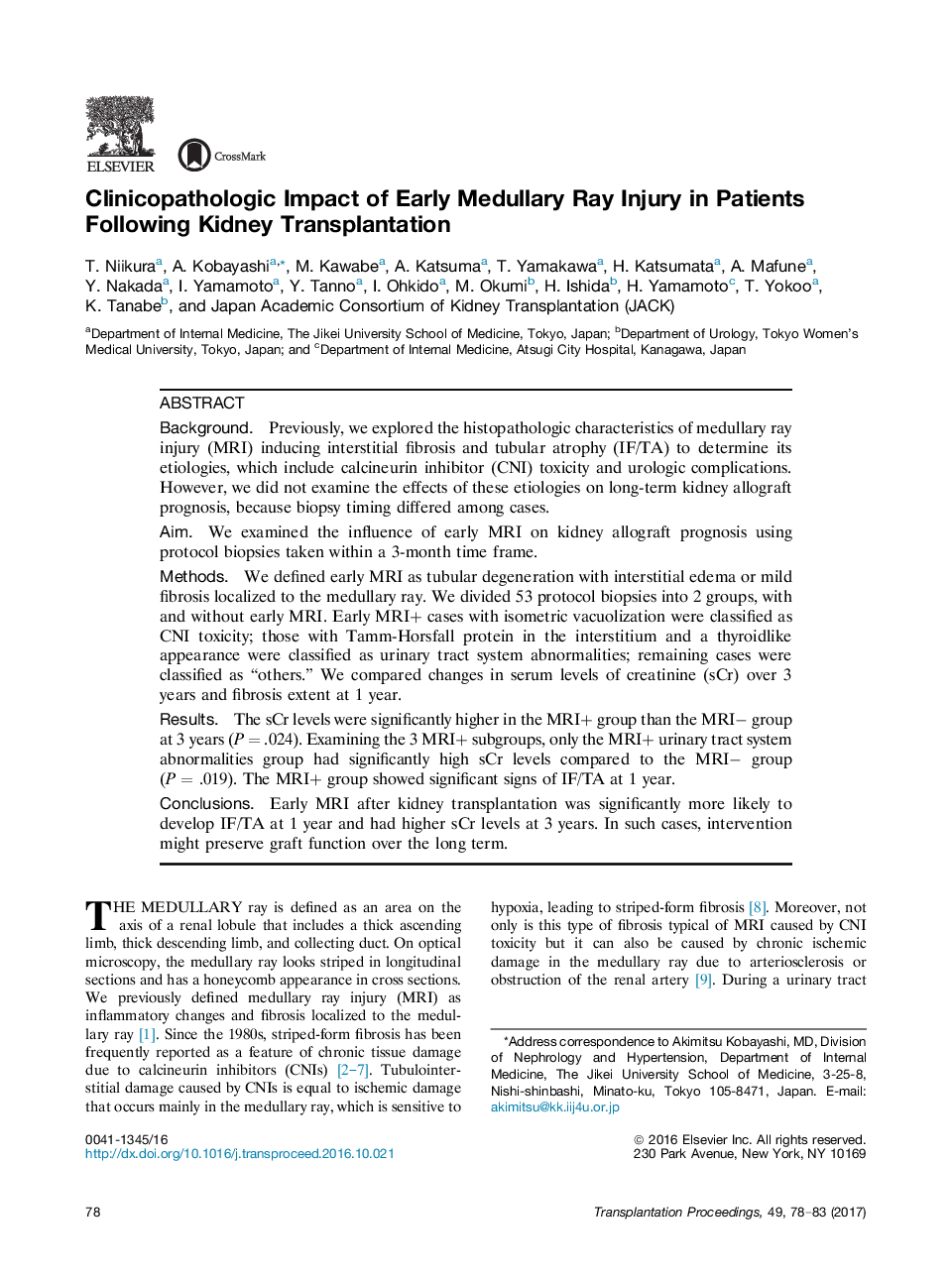| Article ID | Journal | Published Year | Pages | File Type |
|---|---|---|---|---|
| 5729293 | Transplantation Proceedings | 2017 | 6 Pages |
BackgroundPreviously, we explored the histopathologic characteristics of medullary ray injury (MRI) inducing interstitial fibrosis and tubular atrophy (IF/TA) to determine its etiologies, which include calcineurin inhibitor (CNI) toxicity and urologic complications. However, we did not examine the effects of these etiologies on long-term kidney allograft prognosis, because biopsy timing differed among cases.AimWe examined the influence of early MRI on kidney allograft prognosis using protocol biopsies taken within a 3-month time frame.MethodsWe defined early MRI as tubular degeneration with interstitial edema or mild fibrosis localized to the medullary ray. We divided 53 protocol biopsies into 2 groups, with and without early MRI. Early MRI+ cases with isometric vacuolization were classified as CNI toxicity; those with Tamm-Horsfall protein in the interstitium and a thyroidlike appearance were classified as urinary tract system abnormalities; remaining cases were classified as “others.” We compared changes in serum levels of creatinine (sCr) over 3 years and fibrosis extent at 1 year.ResultsThe sCr levels were significantly higher in the MRI+ group than the MRIâ group at 3 years (PÂ = .024). Examining the 3 MRI+ subgroups, only the MRI+ urinary tract system abnormalities group had significantly high sCr levels compared to the MRIâ group (PÂ =Â .019). The MRI+ group showed significant signs of IF/TA at 1 year.ConclusionsEarly MRI after kidney transplantation was significantly more likely to develop IF/TA at 1 year and had higher sCr levels at 3 years. In such cases, intervention might preserve graft function over the long term.
